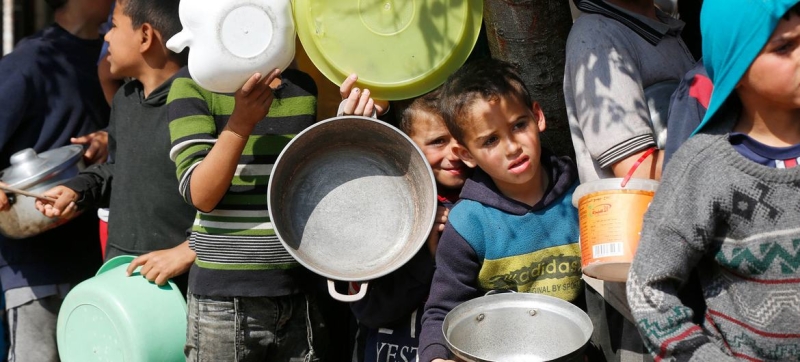
30 percent of children under two years of age in Gaza suffer from acute malnutrition or wasting. In 2023, a fifth of the population of 59 countries would go hungry Peace and security
281.6 million people faced acute hunger last year. The food security situation has been deteriorating for five years in a row. UN humanitarian agencies warned of this on Wednesday, expressing concern about mass famine in Gaza, Sudan and other regions.
According to the new Global Report on Food Crises, more than 20 percent of the population—one in five people—faced acute food insecurity in 59 countries in 2023. However, in 2016, this figure was approximately 10 percent, and the food crisis was observed in 48 countries.
“When we talk about acute food shortages, we are talking about such a serious famine that it poses a direct threat to human health and life. “This is a famine that threatens to become widespread and lead to widespread mortality,” said Dominique Burgeon, director of the UN Food and Agriculture Organization (FAO) office in Geneva.
Impact of the pandemic
The problem of food insecurity has been significantly worsened by the COVID-19 pandemic. Since the coronavirus crisis erupted at the end of 2019, around one in six people in 55 countries faced undernourishment, and just a year later the figure was undernourished, the report found.
The need for daily supplies in Gaza
The report noted that food crises have worsened in 2023, with particular concern in Gaza and Sudan, “where people are dying of hunger,” said Gian Carlo Chirri, director of the WFP Geneva office.
Nearly seven months of fighting in Gaza have left people unable to meet their food needs, he said.
“They have exhausted all survival strategies such as consuming animal feed, begging, selling their belongings to buy food. They live without a livelihood most of the time, and some of them die of hunger,” Chirri said.
The only way to stop hunger is to quickly ensure daily food supplies, said WFP representative to journalists in Geneva.
It is also necessary to restore sources of income and eliminate the root causes of hunger, he noted, but food aid is needed in the near future, which requires conditions that allow humanitarian personnel to move freely and affected people to access assistance.
Mass famine
Previously food security experts warned that widespread famine in northern Gaza could occur between now and May 2024.
“We are moving closer to a situation of widespread famine every day. Child malnutrition rates are rising. We estimate that 30 percent of children under two years of age currently suffer from acute malnutrition or wasting, and 70 percent of the population in the north of the sector faces catastrophic levels of hunger,” Chirri said.
In his opinion, there is reason to believe that all three thresholds for declaring mass famine – food insecurity, malnutrition, mortality – will be recorded within the next six weeks.
Dangerous situation in Sudan
According to the report, after the escalation of the conflict in Sudan last year, 20.3 million people – or 42 percent of the country’s population – experienced food difficulties.
This is the world’s highest number of people facing “extreme” levels of acute food insecurity, or phase four on the Integrated Food Security Phase Classification scale. The most critical level is the fifth phase.
Read also:
LET’S EXPLAIN | Mass Famine: How to Prevent a Humanitarian Catastrophe?
The planting season in Sudan is just weeks away, and the distribution of humanitarian aid must be immediately cleared throughout the country to avoid further deterioration of the situation, the authors of the report emphasized.
“What worries us greatly is that most people depend on agriculture for their livelihood. And, for example, in the state of El Gezira there are now critical conditions in the food production sector. About 50 percent of Sudan’s wheat is produced there,” Burgeon said.
He said it is critical to provide agricultural inputs to the people who have access so they can plant their fields. If people are unable to do this, then humanitarian organizations must be prepared to meet massive food aid needs before next year’s harvest season.
The report also highlights that in 2023, South Sudan, Burkina Faso, Somalia and Mali are likely to face the worst level of food insecurity – phase five.
The study’s authors noted that data was missing for some countries where there are concerns about the crisis, including Ethiopia. Additionally, 19,200 people in Haiti identified as being in phase five from September 2022 to February 2023 “no longer experienced these conditions until the end of 2023.”
Last year, some 36 million people in 39 countries faced extreme levels of acute food insecurity (phase four), up four percent from 2022. More than a third of them are residents of Sudan and Afghanistan.
In addition, about 165.5 million people in 41 countries faced crisis level (third phase) food insecurity, while about 292 million people in 40 countries experienced difficulties in providing themselves with food (second phase).
